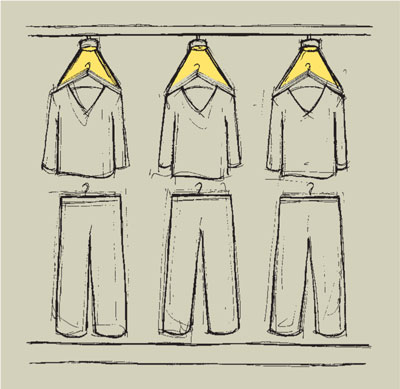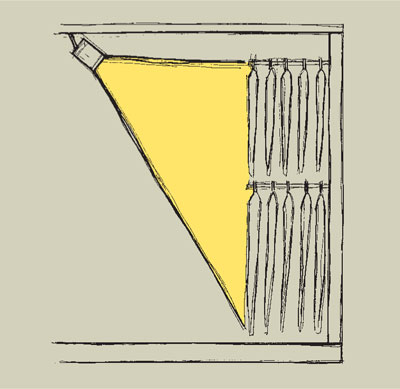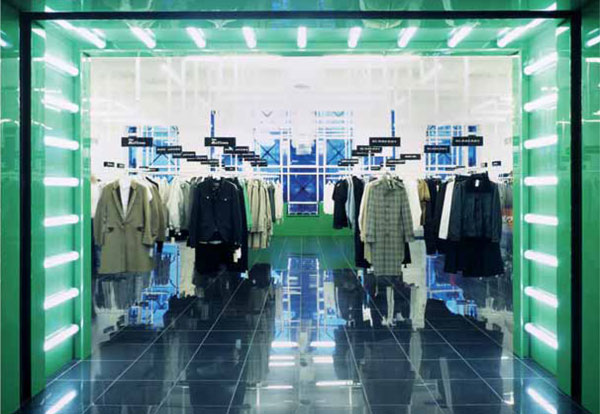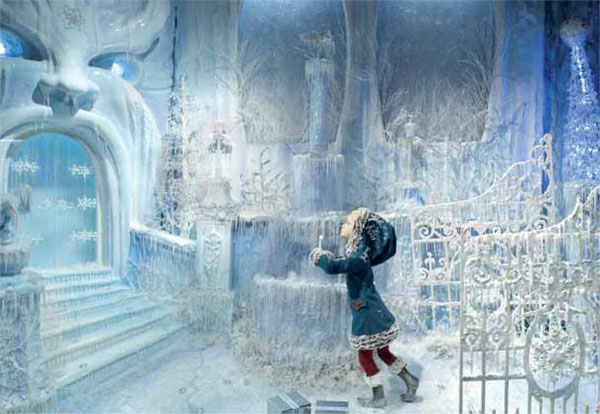Lighting

When lighting a wall, lights should be adjusted so that the beams are focused on the clothes and not on empty adjacent walls, floor, or ceiling. The lamps should always face the wall and should not be directed into the shop, blinding the customers.

The correct-sized beam width should be used: anything too small will highlight just one section of a garment; anything too wide will spill over the presentation.
Lighting should never be an afterthought. The following should always be considered when creating a display:
Does the display lend itself to lighting?
Is the display in an area accessible to electric sockets or a lighting track?
How will the display be lit?
What fittings are required to light the display?
Lighting plays an integral part in any retail environment, whether it is used for highlighting an in-store focal point or simply to flood the fixtures with enough light so that the customers can easily find what they are looking for (see Lighting chart on page 203). On no account will lighting be the most economical item in the visual merchandiser’s budget; good-quality, effective light fixtures can be expensive.
Unfortunately, retailers do not always utilize lighting rigs to their full extent. Many still place all of their efforts into dressing the display, yet fail to make it stand out with the use of good lighting. Often the most exciting visual areas in a store are hidden in the shadows.
A track system with adjustable lights offers the most flexibility for in-store displays and gives the visual merchandiser the opportunity to use several different lamp fittings, each of which will perform a different role within the display. Spots will highlight an individual piece of merchandise, while floods will give an ambient light to the whole.
The wattage and beam width of a lamp can be baffling to a novice. The actual lamp fitting is useless without the correct lamp. Many light fixtures can house a variety of lamps, but not all of them will be universally effective. The size of the beam width you require usually depends on the size of the grouping it is expected to highlight. A small product item, such as jewelry, for example, will only require a three-degree beam width; anything wider will illuminate the surrounding area. Shop floors are often lit with fluorescent strip lighting that, when used properly, gives an overall ambient light that is effective and efficient.

Fluorescent strip lighting used in an unconventional way at Selfridges, London, creates an impressive focal point at the entrance into the men’s designer section.

The lighting in this Christmas window at Fortnum & Mason, London, helps create ambience and gives the impression of winter. Even the little girl’s candle has been cleverly lit.
